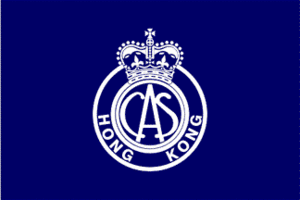Civil Aid Service
| 民眾安全服務隊 | |
 | |
| Agency overview | |
|---|---|
| Formed | 1952 |
| Jurisdiction | Hong Kong |
| Headquarters | 8 To Wah Road, Yau Ma Tei, Kowloon |
| Employees | 112 full time; 3,634 adult members and 3,232 cadet members |
| Minister responsible | |
| Agency executives |
|
| Website | CAS |
| Civil Aid Service | |||||||||
| Traditional Chinese | 民眾安全服務隊 | ||||||||
|---|---|---|---|---|---|---|---|---|---|
| |||||||||
| Alternative Chinese name | |||||||||
| Traditional Chinese | 民安隊 | ||||||||
| |||||||||

The Civil Aid Service (Chinese: 民眾安全服務隊) or CAS (民安隊) in short is a civil organisation that assist in a variety of auxiliary emergency roles, including search and rescue operations in Hong Kong:
- providing support to the government regular emergency forces on counter disaster activities, mountain search and rescue, flood rescue, countryside fire protection duties;
- providing crowd control and management services in major public functions;
- patrolling country parks and hiking trails and to assist people in need of help;
- staging performances to enhance public attention on major campaigns or activities organised by government departments and non-government organisations;
- providing training activities and professional services on mountain safety/rescue for government departments and non-government organisations.
CAS is funded by the Hong Kong Government and its members wear uniforms.
History


Formed in 1952 under the British colonial government of Hong Kong (CAS Ordinance) and modelled after Civil Aid agencies in the United Kingdom.
As well, a youth section, CAS Cadet Corps, adds 3,232 volunteers to the regular 3,634 force.
The concept was introduced during British rule, an organisation also found in Britain.
Organisation
CAS are headed by the Commissioner and CAS (Department) by Chief Staff Officer (also Deputy Commissioner).
Past Commissioners
- Dr Norman Leung
- The Hon Charles Edward Michael Terry (Founding Commissioner)
Rank
- Commissioner (Grade Senior VII Officer)
- Deputy Commissioner - Operations, Administration (Grade VII Officer)
- Senior Assistant Commissioner - Operations, Administration, Development & Youth (Grade VII Officer)
- Regional (Hong Kong, Kowloon, New Territories) / Cadet Corps / Support Force Commander / Administration Force / Tactical Force (Grade VII Officer)
- Deputy Regional / Cadet Corps / Support Force Commander (Grade SVI Officer)
- Assistant Regional Commander / Principal Staff Officer (Grade VI Officer)
- Company Commander / Senior Staff Officer (Grade SV Officer)
- Deputy Company Commander / Staff Officer (Grade V Officer)
- Platoon Commander / Assistant Staff Officer (Grade IV Officer)
Rank Below IV are called "Other Rank Members"
- Chief Section Leader (Grade Senior III )
- Senior Section Leader (Grade Senior III )
- Section Leader (Grade III )
- Deputy Section Leader (Grade II )
- Senior Member (Grade Senior I )
- Member ( Grade I )
- Cadet / Senior Cadet / Deputy Cadet Leader / Cadet Leader / Senior Cadet Leader
Facilities
- Hong Kong Training Centre - Causeway Bay
- Tai Tan Camp - Sai Kung
- Yuen Tun Camp - Sham Tseng
Fleet
CAS Vehicles is managed by Transport Company. There are various types of vehicles in service for different uses including:
- Motorcycle
- Mobile Command Unit - Toyota Coaster 16 Seats
- Mountain Rescue Vehicle
- Emergency Lightening Vehicle
- Mobile Canteen
- Rescue Tender
- Coaches - Mistubishi Rosa
- Van, etc.
Mountain Search and Rescue Company
| Mountain Search and Rescue Company | |||||||||
| Traditional Chinese | 民安隊山嶺搜救中隊 | ||||||||
|---|---|---|---|---|---|---|---|---|---|
| |||||||||
The Mountain Search and Rescue Company (民安隊山嶺搜救中隊) or CAS MSaR consists of two search and rescue teams specializing in mountain terrain within Hong Kong (mainly in the New Territories). MSaR team is made up of auxiliary members of CAS. Formed in 1967, it has a combined total of 246 members.[1] MSaR works with Hong Kong Fire Services and Government Flying Service (air support) when deployed to incidents.
Crest
The current crest of the force was adopted in 1997 to replace most of the British colonial symbols:
- St Edward's Crown replace with the Bauhinia, Hong Kong's regional emblem
- Crest's unilingual wording CAS Hong Kong replaced with the bilingual "香港 - 民安隊 Civil Aid Service - Hong Kong"